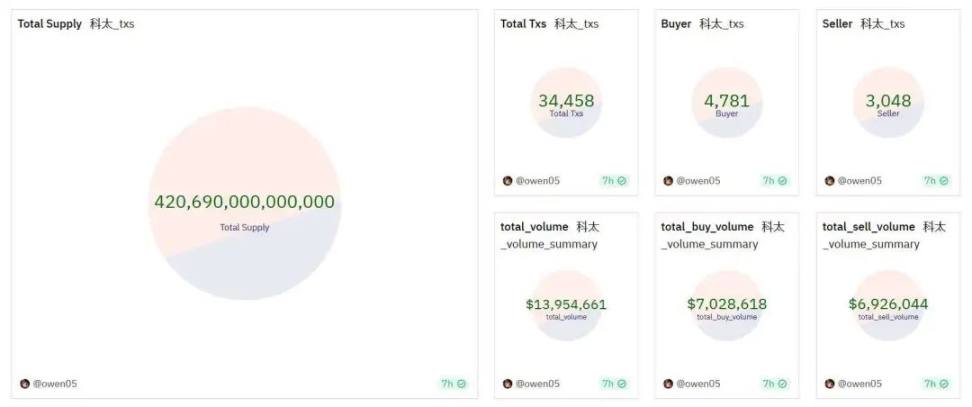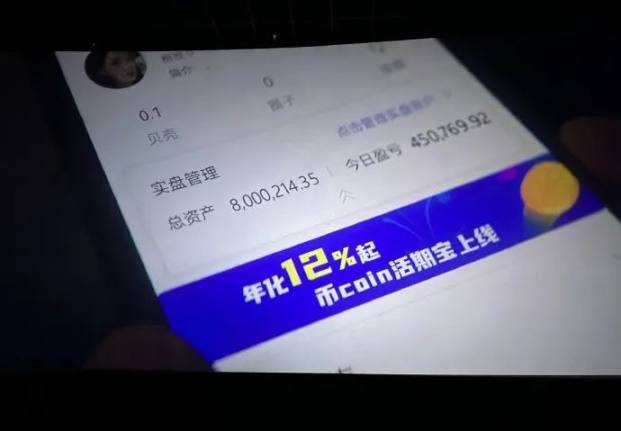The anti-fraud movie "All In" has become popular, and blockchain has become even "darker."
Author: Terry, Plain Language Blockchain
In the 2022 Spring Festival Gala, Shen Teng's line "I am flipping dogs in the metaverse" made the namesake MemeDogeking soar, and a similar event occurred during this summer's box office:
The anti-fraud film "All In," which officially premiered on August 8, features numerous references to cryptocurrency elements. Among them, the Meme "Ketaicoin," used for scams in the film, saw an on-chain transaction volume reaching approximately $14 million within just a few days, with both the number of participants and holding addresses surging.
As online scams become increasingly diverse, especially against the backdrop of deepening anti-fraud campaigns, "All In," which has already become the champion of total box office revenue for preview screenings in Chinese film history, has unsurprisingly sparked widespread discussion both within and outside the cryptocurrency industry. It seems to have led more people to equate cryptocurrency assets directly with scams.
Cryptocurrency Elements in "All In"
First, let's take a look at what cryptocurrency elements are present in the anti-fraud film "All In" and what they aim to express.
One of the most widely circulated screenshots within the cryptocurrency community is undoubtedly the scene where the character played by Wang Dalu spends 8 million RMB to purchase "Ketaicoin," which corresponds to the English subtitle that is identical to the original English name of Ethereum.
In other words, the Token in this film is actually another Chinese translation of the original English name of Ethereum. In the film, the Token is portrayed as a tool used by a scam group to deceive victims, thereby funneling funds into a "pig-butchering" scam.
Another widely discussed cryptocurrency element in the film is a certain platform, where the character played by Wang Dalu spends 8 million RMB to purchase Tokens, which is depicted as a scam tool used by the scam group in the film. (This platform also has a namesake in reality.)
This name similarity has directly pushed this platform into the center of public attention, and in the movie, the plot related to these cryptocurrency elements is the final link in the victims being scammed, which ultimately leads to the suicide of the deceived, effectively labeling the "cryptocurrency industry" with a scam tag.
It is worth noting that as of the time of writing, the summer box office success of this anti-fraud film has become increasingly evident: according to data from Maoyan Professional Edition, the total box office of "All In," combining preview screenings and its release since August 8, has reached 745 million RMB, with an expected total box office exceeding 3 billion RMB.
Therefore, it is anticipated that this wave of labeling cryptocurrency elements will continue to gain traction, and even with the film's box office success, it will label more ordinary viewers who have never encountered cryptocurrency-related knowledge with "cryptocurrency = scam."
The "Stereotype" of Cryptocurrency Assets?
In fact, in this anti-fraud film, whether it is a certain platform or "Ketaicoin," various cryptocurrency elements are essentially just packaging tools used by scam groups to deceive victims.
In other words, the "Ketaicoin" and a certain platform in this film are merely pyramid schemes and pig-butchering scams dressed in the guise of "blockchain" and "cryptocurrency assets," similar to how some scams exploit concepts like the metaverse, artificial intelligence, quantum computing, and superconductors after they become popular, merely using these concepts as tools.
The character played by Wang Chuanjun, the leader of the scam group, explicitly states: "Small bets let him win, then give him (the player) some insider information. We have experts here; we can create a webpage in 10 minutes. Everything they see, all the webpages and game tables, are customized by us. If I want him to win, he wins; if I want him to lose, he loses."
Some cryptocurrency enthusiasts have expressed that labeling this circle as a scam is somewhat "overreacting." Although the film depicts a victim who commits suicide after investing in Tokens, its legal classification falls under "pig-butchering" scams, where terms like "insider trading," "financing," and "profit sharing" correspond to the "pig-butchering" scams in telecom fraud.
The characteristics of pig-butchering scams typically involve scammers using the lure of high profits from asset speculation to deceive victims into transferring money. However, until the end, the principal may be scammed away without the victims ever directly participating in asset speculation or trading. The trading K-lines and trends involved may be entirely simulated displays from the scammers' servers.
So, in a sense, it is not that "blockchain" and "cryptocurrency assets" are equivalent to pyramid schemes and pig-butchering scams, but rather that these scams exploit the concepts, stigmatizing neutral technological concepts like "blockchain" and "cryptocurrency assets."
"Cryptocurrency" Needs Regulation to Clarify the Source
Whether it is the CBDC (like China's digital RMB DCEP) that central banks around the world plan to launch, or stablecoins attempted by large enterprises (like the failed Libra and the recently launched PYUSD), regulatory bodies and traditional financial institutions have been actively exploring the application prospects of cryptocurrency assets and blockchain technology.
This will bring many benefits. For example, from the perspective of the financial system, commercial banks around the world can circulate central bank digital assets (CBDC) through cross-chain technology and allow assets to circulate globally in compliance, achieving international capital flow.
However, we need to clarify that while blockchain and cryptocurrency assets bring convenience and potential financial innovation, they also urgently require regulatory standardization.
In fact, to some extent, "All In" expresses this quite subtly—now in the real world, stablecoins like USDT have increasingly been used for cross-border illegal fund transfers in scams and pig-butchering schemes.
In recent years, activities using DeFi protocols have also steadily expanded. Statistics show that over 70% of payments based on cryptocurrency related to illegal activities have been received by DeFi protocols, with Tornado.cash having seemingly become the "stolen infrastructure" for the DeFi hacker industry and pig-butchering schemes.
Meanwhile, compared to the strictly regulated traditional financial system, the regulatory framework for cryptocurrency assets, especially stablecoins, has yet to take shape, making stablecoins like USDT and other on-chain tools breeding grounds for criminals, further stigmatizing blockchain and cryptocurrency assets.
However, since the U.S. Treasury Department's Office of Foreign Assets Control (OFAC) issued sanctions against Tornado Cash last year, DeFi regulation has already been brought to the forefront.
In the past month, the U.S. Congress has introduced or is reviewing a series of cryptocurrency-related bills, particularly those involving stablecoin regulation, which cover various aspects of cryptocurrency asset regulation, aiming to oversee everything from stablecoins to regulatory jurisdiction:
- The Cryptocurrency National Security Enhancement Act. A bipartisan bill focused on the circulation of special assets and compliance with sanctions, which, if approved, will have a significant impact on DeFi protocols;
- The 21st Century Financial Innovation and Technology Act. Aims to establish a reliable process to determine whether digital assets are commodities or securities, which, if passed, will definitively define the regulatory roles of the CFTC and SEC regarding cryptocurrency assets;
- The Digital Asset Market Structure Act. Aims to define the roles of the SEC and CFTC in cryptocurrency and establish a framework for determining whether certain cryptocurrency assets are securities or commodities;
- The Digital Commodity Exchange Act. Specifies that stablecoin providers can register as "fixed-value digital commodity operators," which includes record-keeping and reporting requirements;
Overall, regulation and innovation need to be balanced. In the early stages of the birth and development of new things, wild growth is inevitable, but the ensuing compliance issues will become increasingly prominent and vital, gradually clarifying the source and allowing neutral technological tools to realize their rightful value.
Thus, the label of "cryptocurrency = scam" in "All In" needs regulation to clarify the source. As more people experience the convenience brought by blockchain and cryptocurrency technology in their lives, the stereotype of "cryptocurrency = scam" will naturally fade.
Whether we are ready or not, this day will ultimately arrive in the cryptocurrency world.











